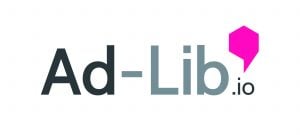
Creativity has been a big topic in advertising for a number of years. There have been many debates and panel discussions dissecting the importance of both creativity and data, along with the roles they each play in successful marketing campaigns. But which one is more important? The industry’s obsession with data always seemed to answer that question long before anybody ever stepped on stage.
Are you saying the right thing to the right people in the right place? Join us at the next Campaign Online Briefing: Cross-Platform Marketing – How to do It Right. Our experts will help you put together a content strategy that works across all the right media.
In more recent times, and over the course of the pandemic, we’ve seen the amount of data available deplete, as third-party cookies disappear, Apple makes changes to IDFAs, and data privacy regulations are implemented all over the world.
Now, creativity is being looked at as one of the ways that the industry can overcome the lack of data available to it. “It’s not going to work in the same way that it used to. There is no longer that opportunity to gather conversions through low quality, below-the-fold creative or serving of ads. You’ve got to think about your messaging, and you’ve got to be able to control your messaging,” says Oli Marlow Thomas, founder of creative management platform Ad-Lib.io.
Ad-Lib.io was created four years ago after we realised that the industry paid a lot of attention to media, data, and targeting, but wasn’t really interested in the messaging side of things. Over the years, studies have been conducted proving that while media, data, and targeting do provide a small uplift in performance when optimised, creative has actually driven around seven times the performance of the others.
With this insight, a next-generation creative management platform that goes well beyond standard templates or message customisation was born. The thinking was that everyone understands that good creative drives business results, but no one really understands how to deliver good digital creative.
Ad-Lib.io has been built with five pillars in mind: creative governance, reusability, greater scalability, greater media alignment, and creative agility – and all of that is underpinned by data. This all means that everything is built to best practice, it’s built with fixed and flexible elements, it has tools to build and automate cross-channel production, it’s about leveraging the media agency’s work to inform the creative messaging framework, and it enables brands to talk to consumers at the right time, in the right place, with the right message.
Even with these pillars in place, the team at Ad-Lib.io is always looking for new and better ways to improve our tech and help brands drive the best business results. So we decided to overhaul our platform. The latest release aims to provide marketers with an easier, faster and better way to deliver hyper-relevant digital creative at scale.
The process for getting ads from ideation through to activation has been streamlined and there are code-free tools for marketers to produce and activate ad variants across channels, formats and media platforms. The updated platform was trialled by the likes of Nestlé, Estée Lauder, and Shell.

“Our customers are super engaged in our journey. They want to help us, and we want to help them. We spend a lot of time with senior management absorbing their feedback. For example, L’Oréal has us involved at all levels of the customer journey trying to help their business, because everyone understands how important this is,” says Marlow Thomas. “Media spend is accelerating in digital rapidly. But no one has really spent time thinking about digital creative. It’s probably time to think about how we allocate some of that TV budget to thinking a bit more about how we manage content more holistically for digital.”
Looking ahead as a business, we are super interested to see what happens with the walled gardens and will be keeping a close eye on whether creative can be a consistent thing across platforms like Google, Facebook, Amazon, and TikTok.
Essentially, the audiences are going to be largely the same within the media buying platforms but, if the creative is working on Facebook against ‘X’ audience, could it be activated in a simple way on Google against ‘Y’ audience? The idea of having those levers to optimise and adjust the content in real-time across many different platforms and many different formats is so powerful for brands.
Ad-Lib.io is giving advertisers the tools to truly manage their messaging, aiming to simplify and streamline the processes involved. We are determined to prove that creative data can be just as powerful as media data, especially to creative agencies. We have a responsibility as a company driving this to go out to the market and show just how well creativity can improve business results, and we are doing a lot of work on that at the moment.
While Ad-Lib.io continues to expand in the region, working with some of the largest global brands in the world, its presence has also grown into further markets. The opening of the latest office in the DACH market has also been recognised by Google following the seventh Google Partner Certification in Germany alongside MENA, UK, USA, Australia, Singapore and Spain.
To find out more about Ad-Lib, reach out to [email protected] or visit the website at ad-lib.io for more details.









